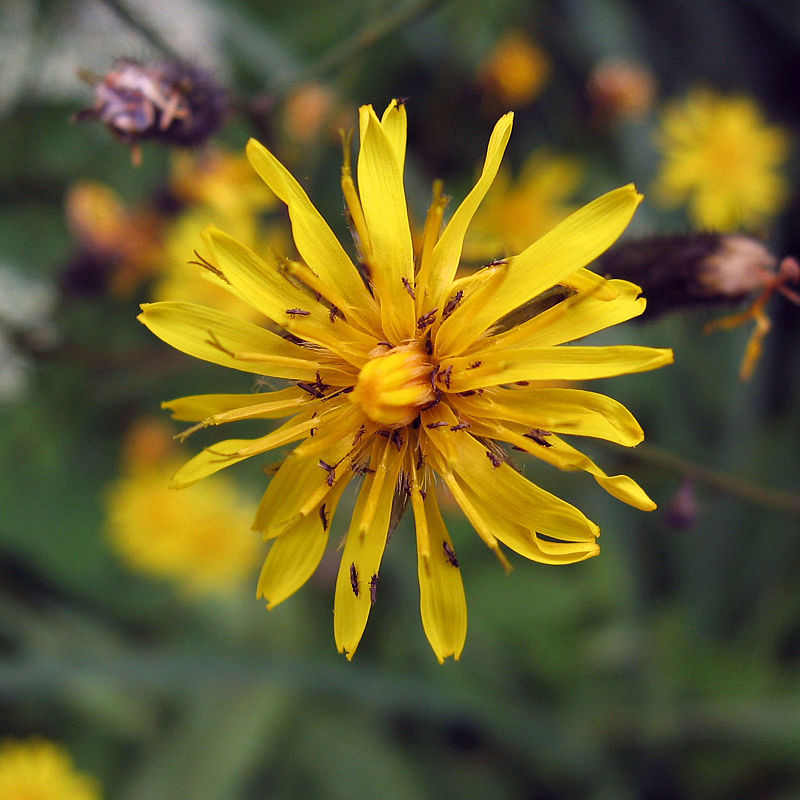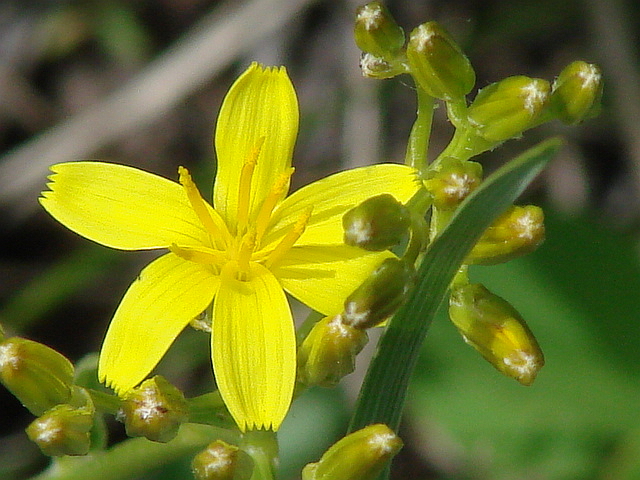Crepis tectorum
Crepis acuminata
annual hawksbeard, narrow leaf hawksbeard, rooftop hawksbeard
long-leaved hawksbeard, tapertip hawksbeard
Basal leaves petiolate, the blade lanceolate or oblanceolate, finely toothed to pinnately parted, up to 15 cm. long and 4 cm. wide; reduced cauline leaves sessile and auriculate, linear, often involute.
Basal and lower cauline leaves 1-4 dm. long, pinnately lobed, mostly with broad central rachis, the lobes entire or sometimes toothed or cleft; upper leaves few and reduced.
Heads several to numerous, 30-70 flowered;
involucre 6-9 mm. high, its inner bracts 12-15, with fine hairs and sometimes with stalked glands as well, the outer bracts about one-third as long;
corollas all ligulate, yellow.
Heads numerous, 20-200, cylindric, 5-10 flowered;
involucre 8-16 mm. high, glabrous, the outer bracts less than half a long as the 5-7 inner ones;
corollas 10-18 mm. long, all ligulate and yellow.
Achenes 2.5-4.5 mm. long, dark reddish-brown, spindle-shaped, with 10 ribs.
Achenes yellow or brownish.
Crepis tectorum
Crepis acuminata
- Local floras:
BC,
CA,
OR,
WA
- Local Web sites:
CalFlora,
CalPhotos,
Flora NW,
PNW Herbaria
WildflowerSearch
iNaturalist (observations)
USDA Plants Database
- LBJ Wildflower Center
- SEINet
- Plants of the World Online
- Encyclopedia of Life
- Wikipedia
- Google Image Search



